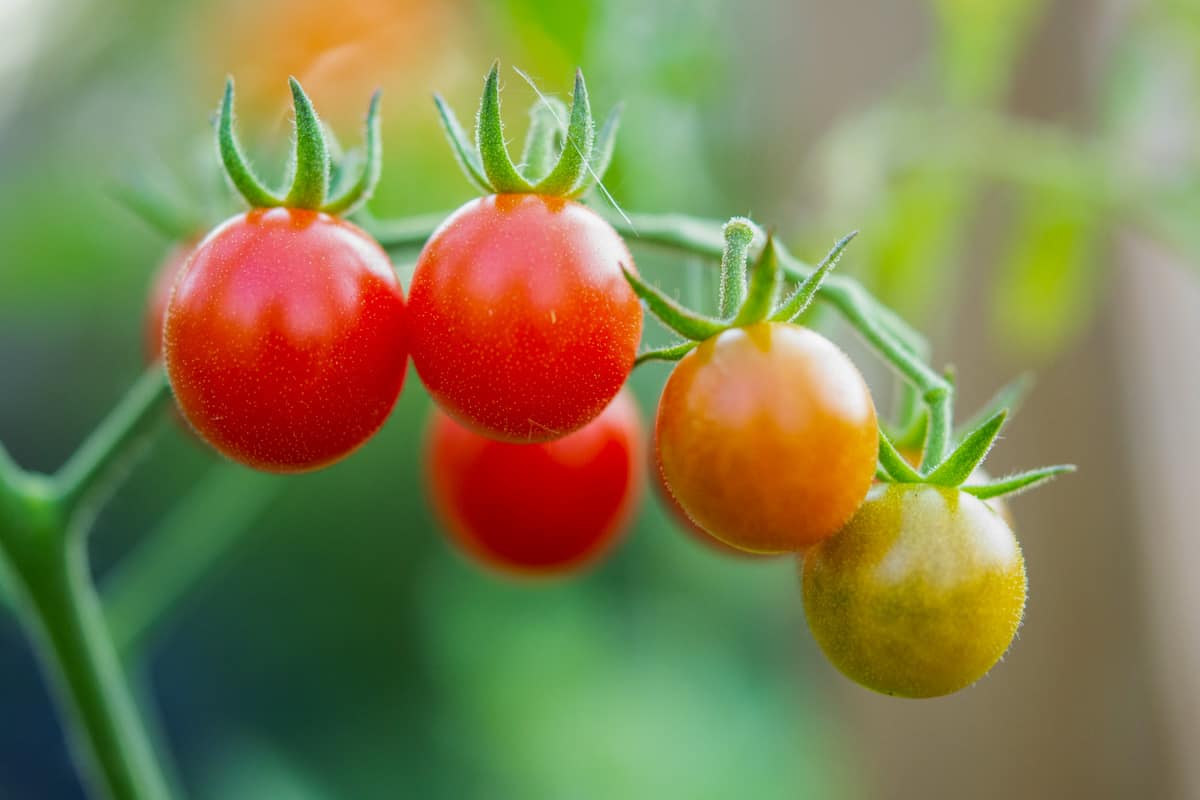Sage And Tomato: The Perfect Pair
Sage and tomato are two ingredients that are often paired together in cooking, and for good reason. They complement each other perfectly, both in terms of flavor and texture. Sage has a warm, earthy flavor that pairs well with the acidity of tomatoes. It also has a slightly bitter note that helps to cut through the richness of tomato sauce. Tomatoes, on the other hand, have a bright, juicy flavor that is enhanced by the savory notes of sage.
In addition to their complementary flavors, sage and tomato also have a similar texture. Both ingredients are slightly fleshy and have a slightly chewy bite. This makes them a good match for dishes that are cooked slowly, such as stews and soups. The sage adds a depth of flavor to these dishes, while the tomatoes provide a touch of freshness.
There are many different ways to use sage and tomato together in cooking. One classic combination is sage and tomato pasta sauce. This sauce is simple to make and is packed with flavor. Simply saute some sage leaves in olive oil, then add chopped tomatoes, garlic, and your favorite herbs and spices. Simmer the sauce for 30 minutes, or until the tomatoes have broken down and the sauce has thickened. Serve the sauce over pasta or rice.
Another delicious way to use sage and tomato is in a roasted vegetable dish. Simply roast your favorite vegetables, such as tomatoes, zucchini, eggplant, and peppers, with a sprinkle of sage. The sage will add a delicious, earthy flavor to the vegetables.
Sage and tomato can also be used in savory pies, salads, and sandwiches. They are a great way to add flavor and depth to any dish.
[MAIN CONTENT]
Here are some additional insights and updates about sage and tomato:
- Sage is a member of the mint family, and it is native to Europe, Asia, and North Africa. It has been used for centuries for its medicinal properties, as well as its culinary uses.
- Tomatoes are also native to the Americas, and they were first introduced to Europe in the 16th century. They quickly became popular, and today they are one of the most popular vegetables in the world.
- Sage and tomato are both high in antioxidants, which can help protect the body against damage from free radicals.
- Sage has also been shown to have anti-inflammatory properties, and it can help to reduce pain and swelling.
- Tomatoes are a good source of vitamins A and C, as well as potassium.
[CONCLUSION]
Sage and tomato are two delicious and versatile ingredients that can be used in a variety of dishes. They complement each other perfectly in terms of flavor and texture, and they both have a number of health benefits. If you are looking for a way to add flavor and depth to your cooking, I encourage you to try using sage and tomato together.
Sage and tomatoes are a classic combination in the kitchen, but they're also great companions in the garden. Sage can help to repel pests that can damage tomatoes, such as flea beetles and tomato hornworms. It can also attract beneficial insects, such as pollinators and predatory wasps. Additionally, sage's deep roots can help to improve the drainage of the soil around tomatoes, which can help to prevent root rot.
If you're looking to plant sage and tomatoes together in your garden, there are a few things to keep in mind. First, make sure that they're planted in full sun. Sage can tolerate some shade, but tomatoes need at least six hours of sunlight per day. Second, plant them at least 18 inches apart to give them enough space to grow. Finally, water them regularly, especially during hot weather.
For more information about sage and tomato companion planting, you can visit Gardenia Inspiration. This website has a wealth of information about companion planting, including a list of plants that are compatible with sage and tomatoes.
FAQ of sage and tomato companion
Q: Can I plant sage next to tomatoes?
A: Yes, sage is a good companion plant for tomatoes. It helps to repel pests such as flea beetles and attracts beneficial insects such as ladybugs. Sage also helps to improve the flavor of tomatoes.
Q: What are the benefits of planting sage and tomatoes together?
A: There are several benefits to planting sage and tomatoes together. Sage helps to repel pests that can damage tomatoes, such as flea beetles and aphids. It also attracts beneficial insects, such as ladybugs, that help to control pests. Sage can also help to improve the flavor of tomatoes.
Q: What are some other good companion plants for tomatoes?
A: Some other good companion plants for tomatoes include basil, beans, carrots, chives, garlic, mint, onions, parsley, and peppers. These plants help to repel pests, attract beneficial insects, or improve the flavor of tomatoes.
Q: What are some plants that I should avoid planting near tomatoes?
A: Some plants that you should avoid planting near tomatoes include eggplant, potatoes, and cucumbers. These plants can compete with tomatoes for nutrients and water. They can also attract the same pests and diseases as tomatoes.
Q: How far apart should I plant sage and tomatoes?
A: Sage and tomatoes should be planted about 18 inches apart. This will give them enough space to grow and thrive.
Image of sage and tomato companion
- Image 1: A sage plant growing next to a tomato plant in a garden.
- Image 2: A close-up of a sage leaf with a tomato blossom in the background.
- Image 3: A bowl of tomatoes with fresh sage leaves sprinkled on top.
- Image 4: A plate of pasta with tomato sauce and sage leaves.
- Image 5: A glass of tomato juice with a sprig of sage.

Post a Comment for "Sage And Tomato: The Perfect Pair"